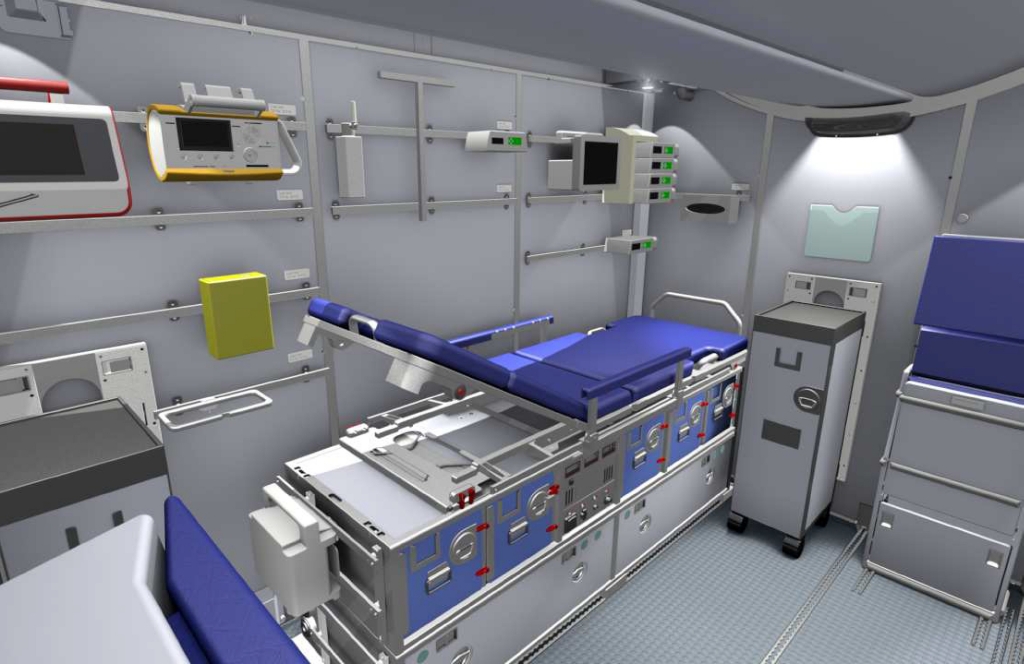It does not take a daredevilish stunt person to find themselves in a precarious health situation all of a sudden. Regular people pursuing their unspectacular routine chores fall victim to unforeseen circumstances all the time: a life-threatening coronary attack may occur during a stressful business meeting or a cervical vertebra get seriously dislocated on a slippery stairwell. Should this happen on familiar terrain with trusted help around the corner, bad enough. But what, if destiny strikes far away from home?
Travel insurance: Assure to be insured
When venturing off into an alien world especially, it is wise to hold insurance policies that allow – and cover! – immediate action in cases of emergency. A carefree motorcycle hellride on pothole-mottled Third World country roads not seldom ends in a dreaded local hospital.
Rescue options are manifold – yet costly. Next to a number of enterprises organising ambulance flights worldwide, also Deutsche Lufthansa offers the so-called Patient Transportation Compartment, PTC – a flying intensive care unit available on demand and now bookable on all intercontinental connections departing from their Frankfurt and Munich hubs (62 destinations). PTCs have been in use on aircraft Boeing 747-400 and Airbus A340 and A330 since 1999 and up to one hundred intensive-care passengers have been transported annually. At an altitude of 32,000 feet, each unit provides ample space and combines state-of-the-art technology, skilled specialists and efficient processes in a comfort and safety equal to a hospital ICU.

Six PTC units in total are available. A module can be installed upon demand on a chosen direct intercontinental LH flight connecting from Frankfurt and Munich. Depending on route and distance, flight time is ideally reduced to half and expenses often cut considerably in comparison to customary air ambulances, whose smaller aircraft may be forced to stop over for frequent refuelling. Photo credit: ©Deutsche Lufthansa.
Ambulance flight: Who makes the booking – and who covers the costs?
In the majority of cases, the airline’s immediate client will be an insurance company to assess expenses and options and to decide, if the medical transport should be carried out by a customary ambulance plane or rather by means of a scheduled airline flight. The patient will have negotiated coverage of costs with his insurance beforehand. Availability of a PTC is checked within 30 minutes and within three days from the moment of booking, a patient can touch down at his chosen destination. Service support is rendered by the airline with formalities and coordination of the trip. Before full PTC costs are incurred, a thorough check-up ascertains that the patient is fit for transport.
A fixed price list reliably indicates the costs for any one route. Prices are all-inclusive and – next to the PTC and its equipment – contain a business class ticket for an accompanying physician plus one economy class ticket for an additional person (seated next to the PTC). A crew member trained by Lufthansa as medical assistant or nurse, will be present at all times and also help to handle immigration formalities. Additional costs my arise for the physician’s fees and his/her hotel accommodation outside the package deal. Coverage of both has to be clarified with the insurance company separately.
Details on flight time, the route network, costs, service and contact:
http://www.lufthansa.com/online/portal/lh/de/info_and_services/travel_preparation?nodeid=1770814&l=en
Header image courtesy of ©Deutsche Lufthansa/Oliver Roesler
More on mobility and health topics: https://goodmeetings.com/2015/05/what-if-mobility-and-its-health-risks/
